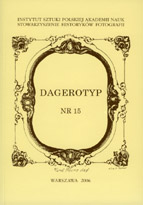
We kindly inform you that, as long as the subject affiliation of our 300.000+ articles is in progress, you might get unsufficient or no results on your third level or second level search. In this case, please broaden your search criteria.



The photographic archive left after Stanisław Niedźwiecki served at the end of 2005 as the pretext to broadly present his works from Persia. The latter were grounded on the 100 preserved films, currently copied on photographic barite paper following a homogenized archaized convention. About 20 original prints of the Author have enriched this collection (from among ca. 180 of his copies, being in majority working ones), which allowed for a certain confrontation. The spectators have been offered the opportunity to reflect on what getting to know old photographs means today. We hardly ever are presented with the opportunity to realise what alterations can be introduced by the presenter of archival records, and how they were displayed originally. Stanisław Niedźwiecki was born at Szajkuny – the then Vilnius province – in 1890. He acquired education in Russian schools and prior to World War I he studied anthropology and ethnography at St. Petersburg University. After the revolution of 1917 he ended up in the Caucasus and it was there that he began taking photographs. Starting from ca. 1921 until 1935 he was in Persia as a hired photographer with archaeological expeditions. He returned to his home at the beginning of 1936, joining the movement of native photography initiated by Jan Bułhak. In 1945 he settled in Jelenia Gora where he ran the studio of landscape and artistic photographs at the Youth Culture Centre. He died in Jelenia Gora in 1976, and a part of his archive has been preserved by his colleagues from the Jelenia Gora Photographic Association. Photographs from Persia inspired me to reflect on the relation between photography and archaeology. The task to report on the archaeological monuments and works of art ranks among the source ideas justifying the presence of photography in culture. This was enhanced already by Francois Arago propagating the invention of Daguerre in 1839 or by Fox Talbot. The photographs of Stanisław Niedźwiecki can be seen as a confrontation between the European and Persian cultural traditions. Photography is derived from the idea of the Renaissance rationality and the need to democratise culture. Persian art survived until the 20th century in the forms shaped in the Middle Ages. A question can be asked whether by glimpsing on the people attending to their everyday business through the eye of the camera, we can perceive the picture differently than this culture perceived itself. Are romanticism and exoticism notions that can be generated from a different stand? It is a fact that presently the principles of photography are applied everywhere and by everyone in a very similar way. When Niedźwiecki was in Persia, there were only a handful of native photographers. A today’s tourist who hunts for exoticism in different parts of the world perceives the latter in a similar way as numerous local camera owners.
More...
Book review: Powstanie styczniowe i zesłańcy syberyjscy, katalog fotografii ze zbiorów Muzeum Historycznego m.st. Warszawy, cz. I. Powstanie styczniowe, opr. Krystyna Lejko, Warszawa 2004, cz. II. Zesłańcy syberyjscy, opr. Elżbieta Kamińska, Warszawa 2005. No english summary available.
More...
A brief information on the daguerreotype portrait of Jozef Kazimierz Selpicjusz Napoleon Czapski, from before 1852 (fig. 1) found in a private collection in Warsaw.
More...
The article is composed of two parts. Part 1: Museum Tradition of Kwidzyń recreates the history of the museum that was established in three stages: initially in 1879 to decay and disperse by the end of the 1880s; and later in 1925 as Heimatmuseum Westpreussen in Marienwender to end together with World War II, and finally as the Museum in Kwidzyń in 1949. The majority of the exhibits have been preserved, just as the majority of photographic negatives. Part 2: Profile of the Kwidzyń Heimatmuseum Negatives deals with the topics of the photographs which come from the second half of the 1920s. and from the 1930s. authored by the then director of the institution Waldemar Heym (1883-1967) who developed and printed his photographs at the local photographer’s shop of Franz Gnodt (fig. 12, 31). They record views of different localities in the region with their architecture and details of this architecture (fig. 14-17, 21-22), homes of the Junker families (fig. 18-20), Kwidzyń itself (fig. 23-25, 16), cemeteries and sepulchral monuments (fig. 26-27), ethnographic monuments (fig. 28-30, 32), shrines and crosses (fig. 34), as well as ample comparative material. The negatives which contain the above topics are currently being catalogued and prepared for display.
More...
The article is opened with an introduction focusing on the beginnings of aerial photography, i.e. the photos of the French village of Petit Pierce from 1855 and of Paris from 1858 taken by Felix Tournachon (Nadar) from an anchored balloon and also of Paris taken by Triboulet from a free-floating balloon in 1879 (non-extand and actually never printed from the negatives that have been destroyed). There is also a mention of aerial photographs of Warsaw by Polish, German, and Russian photographers taken in 1921-1945 and used in topography; mention is made of Polish institutions that dealt with taking them, such as FOTOLOT (Aerophotogrametric Department of the LOT Polish Airlines, established in 1930). The article focuses on remote sensing materials kept at the State Archives of the City of Warsaw (the following sets of files: Collection of Remote Sensing Materials and The Office of the Reconstruction of Warsaw) including the following: – ‘WIDOK MIASTA WARSZAWY z wysokości 200 sążni’ (‘VIEW OF THE CITY OF WARSAW seen from the height of 200 fathoms’) from a balloon, by Adam Lerue and Julian Cegliński, lithograph from 1853 (fi g. 2); – Over 300 glass negatives (13 × 18 cm) of the aerial photographs of Warsaw from 1926 (fig. 3) executed in relation to the non-extend photomap ‘An Overall Plan of the Building Development of the City of Warsaw’. The scarcity of negatives does not allow to recreate the Plan; – ‘WARSZAWA’ photomap (1:2500) from 1935 (fig. 4) elaborated by FOTOLOT and covering the capital without the suburbs (50 sheets stuck onto aluminum sheets); – ‘REGION WARSZAWSKI’ (‘the Region of Warsaw’) photomap (1:10000) from 1934 and 1936 (fi g. 5), also elaborated by FOTOLOT and covering Warsaw with its surroundings (incomplete); – ‘BILDPLAN WARSCHAU’, photomap of Warsaw (1:10000) from September 24, 1939 (fi g. 7) made by the Luftwaffe (10 sheets, 30 × 47 cm); – ‘WARSCHAU’ photomap (1:12500) from the first decade of September of 1939; also made by the Luftwaffe (incomplete, 7 sheets, 50 × 50 cm); – Photomap of the Okęcie Airport in Warsaw (1:10000) from September 4, 1939, also made by the Luftwaffe; – ‘WARSZAWA’ photomap (1:2500) from 1945 or 1946 (fig. 6) made after the aerial photographs of the Soviet Red Army (104 sheets), showing the post-World War II destruction of Warsaw; – Praga (the right Vistula bank district of Warsaw; 1:2500) from July 1947 (11 sheets, 48 × 54 cm). The article concludes with the information on the panorama of Warsaw from the top of the Palace of Culture and Science, taken with a digital camera and computerised by Marek Ostrowski in August-September 2000.
More...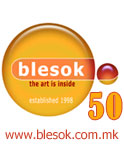

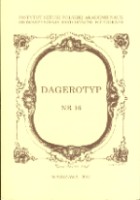
Note about the exhibition „The Great Cracow”, presented in the Museum of the History of Photography in Cracow, July, 11th – October, 29th, 2007. No english summary available.
More...
This article is a description of the daguerreotype portrait of a very well known Polish political emigre (ill. 2). Jundziłł (1790–1862) lived abroad from 1828, mainly in Lausanne. He worked there in the library of an economic society, as well as devoting himself to bringing up his twelve children and assisting other Polish emigrants (Adam Mickiewicz, Ludwik Chodźko, the Plater family). The author of the daguerreotype (1/6 plate) is anonymous. It is likely to have been taken in Lausanne around 1850. It is quite well preserved, while traces of a fixing bath in solution of gold chloride (A. H. L. Fizeau method widely used since 1840) can be seen on its surface.
More...
The article deals with twelve photographs taken in the 1850s by an anonymous author from the balcony encircling the lantern of the dome of the Holy Trinity Lutheran Church (ill. 3). The author of the article has recreated the situation and the conditions in which the photographs were taken. Two men were involved: one was working on the balcony moving the camera from place to another, placing, adjusting it and taking shots. The other one was staying in a dark attic corridor below the balcony where he was preparing negative materials (by coating glass plates with collodion) and developing them. The prints were made in a photographic studio. The layout of shadows allows the order and the approximate time of execution to be determined. The photographer started the work at about 10:40 a.m. After taking five shots he made a break for three hours and the sixth shot was taken at about 4:00 p.m., the seventh at about 4:30 p.m. Presumably the action of taking one photograph lasted 20 minutes (from moving and adjusting the camera till the controlling of a negative’s development). In the next part of the article the author describes precisely twelve photographs (ill. 4-15) and identifies non-existent buildings in the city in order to reveal that the panorama was made in 1858. The authorship is still unknown, but it was suggested that the work might have been carried out by Konrad Brandel (1838–1930), a young photographer employed at that time in the photographic studio of Karol Beyer. The purpose of this undertaking was to obtain a full panorama of the city after those twelve photographs were put together. However the project turned out to be unsuccessful because between the second and third as well as the fourth and fifth stages of photography there are missing parts and a different angle of inclination of the camera meant the majority of the shots could not be assembled into one wide view (ill. 19) – an end result which can only be achieved with some modifications by appropriate computer software (ill. 20). At present those photographs are a valuable iconographic document showing how Warsaw appeared in the past. The architectural profile started to change from the 1870s and nowadays only churches and buildings of historical value remain (palaces, Hotel Europejski), having been reconstructed after the damages of World War II.
More...
The photographer Jan Bułhak did not consider himself as a cataloguer nor as an archivist who documents reality, but by the majority of people he was recognized as such. The photographs from “The Photographic Archives” made since 1912 for the Municipality of Vilna (under Russian rule at that time), and those taken after World War I in all regions of the reborn Polish state, were referred to by Bułhak as “photographical images”. That is why his series were entitled “Poland in photographical images by Jan Bułhak” and after the World War II “Poland in photographical images by Jan Bułhak and Son”. According to the philosophy of photography that he formulated, he was “depicting knowledge about Poland”. This attitude led him to the introduction of the term of “homeland photography”. During a short stay in Warsaw from July 1920 till April 1921 Jan Bułhak made 716 photographs of the capital city, which in consequence were arranged in thirteen albums numbered from 101 to 113. The only existent copy is kept in the Iconographic Collection of the National Library (Zakład Zbiorow Ikonograficznych Biblioteki Narodowej). The artist photographed his beloved Baroque architecture, as well as places which were not appealing to photographers who permanently lived and worked in Warsaw; for example, buildings and flora along Frascati Street. Bułhak very consequently used the depiction models which he worked out in Vilna that is why so many shots taken in those two cities are hard to distinguish; especially when sculptural details or architectural elements are considered. Warsaw can be easily mistaken for Vilna and vice versa. The purpose of this monographic exhibition of the artist’s oeuvre in the National Museum in Warsaw was, among other things, to restore the memory of Jan Bułhak’s own vision of Warsaw. In the opinion of the article’s author, the symbol of this vision can be seen in the photography Cross from the Jesuit Church and St Martin Church’s tower (Krzyż kościoła Jezuitów i wieża kościoła św. Marcina, ill. 21). This image reminds her of the posterior Vision of the City (Vilna), presented by the photographer since 1930.
More...
Book review: Bertrand Lavédrine, (re)Connaître et conserver les photographies anciennes, Paris, éditions du Comité des travaux historiques et scientifiques, 2007.
More...
Review of the exhibition "Jan Bułhak 1876-1950. Fotografik" ("Jan Bułhak 1876-1950. Photographer"), presented in National Museum, Warsaw (December, 10th, 2006 - February, 11th, 2007). No English summary available.
More...
Reviews of the selected photographic exhibitions in Poland in 2007.
More...

The article is focused on the camera obscura, a widely known optical instrument which presumably was used by 17th- and 18th- century artists (ill. 1). The author treats the subject not as a technical tool helpful in drawing a picture, but rather as a “figure” and metaphor of the particular pictorial status of images. This metaphor of the camera obscura reflects objectivity and immediacy analogous to images which are pertinent to those created inside it. The author tries to prove that the widespread view of photography as objective and direct is only a variation of a much older point of view on the representational status of certain pictures which was revived by the invention in the 19th century of the camera.
More...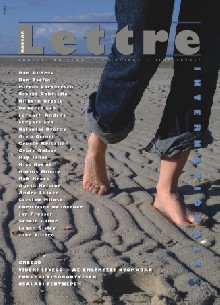
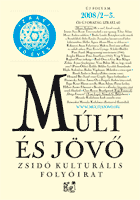
Menashe Kadishman is a classic figure of Israeli visual arts, hitherto unknown in Hungary. Sculptor, painter and installation artist, a real ‘renaissance man’, Kadishman’s work will hopefully soon be introduced to the Budapest public in exhibitions. Our Israel issue is illustrated with his artworks.
More...